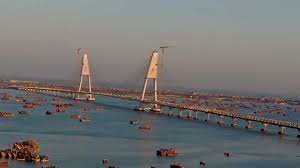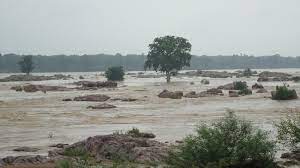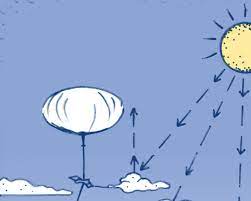Today’s Current Affairs: 27th Feb 2024 for UPSC IAS exams, State PSC exams, SSC CGL, State SSC, RRB, Railways, Banking Exam & IBPS, etc
Table of Contents
Island On The Air (IOTA) Programme:

A dedicated team of amateur radio operators (HAMs) embarked on a significant journey from the cyclone shelters of Nachugunta Island, Andhra Pradesh, to participate in the Island on the Air (IOTA) expedition Programme.
- Island On The Air (IOTA) Programme is a pioneering programme that connects radio amateurs worldwide with stations on islands.
- It was established in 1964.
- It is managed by IOTA Ltd in collaboration with the Radio Society of Great Britain (RSGB), categorising islands into groups for communication.
- Amateur Radio is a popular hobby involving the use of radio frequency spectrum for non-commercial purposes.
- HAM radio operators communicate using designated radio frequencies, engaging in diverse activities like contests, emergency communication support, experimentation, technical learning, and community engagement.
- The hobby offers a unique blend of technical learning, community engagement, and global connectivity through radio waves, emphasising innovation and service
Sudarshan Setu Bridge : Inaugrated

Prime Minister Narendra Modi recently inaugurated the ‘Sudarshan Setu’ bridge connecting Beyt Dwarka island to mainland Okha in Gujarat’s Devbhumi Dwarka district.
- Sudarshan Setu’ Bridge is India’s longest cable-stayed bridge, at 2.32 km, on the Arabian Sea, connecting Beyt Dwarka island to mainland Okha in Gujarat’s Devbhumi Dwarka district.
- It boasts a unique design, featuring a footpath adorned with verses from the Bhagavad Gita and images of Lord Krishna on both sides.
- It also has solar panels installed on the upper portions of the footpath, generating one megawatt of electricity.
- The 2.32 km bridge, including 900 metres of a central double-span cable-stayed portion and a 2.45 km long approach road, has been constructed at a cost of Rs 979 crore.
- Beyt Dwarka is a small island off the coast of Dwarka, Gujarat located at the mouth of the Gulf of Kutch, the island is enclosed by a few temples, white sand beaches, and coral reefs.
Ken River : Cited By Pradhan Mantri In Mann Ki Baat

The Prime Minister in ‘Mann Ki Baat’ recently cited crocodiles in Ken River to hail how technology is being used extensively for the conservation of wildlife in different parts of the country.
- Ken River is one of the major rivers of the Bundelkhand region of central India.
- It flows through two states, namely Madhya Pradesh and Uttar Pradesh.
- It is a tributary of the Yamuna River.
- The river is the last tributary of the Yamuna before the Yamuna joins the Ganga.
- The river originates near the village of Ahirgawan on the northwest slopes of the Kaimur Range in the district of Jabalpur, Madhya Pradesh.
- Crossing the Bijawar-Panna hills, the river cuts a 60 km long, and 150- 180 m deep gorge. It is joined by several streams in this gorge, making waterfalls.
- It travels a distance of 427 km and then merges with the Yamuna at Chilla village, near Fatehpur in Uttar Pradesh.
- It is known for its rare Sajhar or Dendritic Agate stone.
- The major tributaries of the Ken River are Bawas, Dewar, Kaith, Baink, Kopra, and Bearma.
Senior Care Reforms In India: Reimagining The Senior Care Paradigm : NITI Aayog Report

The NITI Aayog has released a position paper titled F“Senior Care Reforms in India: Reimagining the Senior Care Paradigm”, which calls for action on what needs to be done to bring a greater focus on senior care.
Key Highlights of the Report:
- India is witnessing exponential growth in the number and proportion of elderly people, coupled with a decreasing fertility rate (less than 2.0) and increasing life expectancy (more than 70 years).
- The elderly in India currently comprise a little over 10% of the population, which translates to about 104 million. According to the United Nations Population Fund (UNFPA), this demographic is projected to reach 19.5% of the total population by 2050.
- The elderly population (aged 60 years and above) constituted 8.6% of India’s total population in the 2011 Census, with approximately 103 million elderly individuals.
- The transition from high to low mortality rates has shifted a substantial burden of disease to the older population.
- The number of people aged 75 years and above is expected to increase by an astounding 340% between 2011 and 2050.
- Rural Urban Divide: 71% of elderly persons reside in rural areas.
- Life Satisfaction: Nearly 32% of the elderly reported low life satisfaction
- There is an absence of a comprehensive, integrated policy for senior care and support as a significant challenge.
- Access to healthcare services can be a challenge for older adults in India, particularly those living in rural areas.
- As per the National Health Profile, in 2017, there were only 43 physicians per 100,000 population in rural areas, compared to 118 physicians per 100,000 population in urban areas.
Ribosomes : 3D Model

Using electron microscopy, scientists have recently managed to produce a 3D model of a part of the human cell, the ribosome.
- Ribosomes are non-membrane-bound cell organelles made of RNA and proteins.
- They are found in both prokaryotic and eukaryotic cells.
- In eukaryotic organisms, ribosomes are found in the cytoplasm, mitochondria, and chloroplast.
- All prokaryotic ribosomes are found free in the cytoplasm of the cell.
- Ribosomal structure and function are strikingly similar in all organisms and organelles.
- They are made of two subunits, the large and the small subunit which comprises ribosomal RNA (rRNA) and proteins.
- They are complex molecular machines that make proteins from amino acids in a process called protein synthesis, or translation.
- Every cell needs ribosomes to manufacture proteins.
- The ribosome reads the messenger RNA (mRNA) sequence and translates that genetic code into a specified string of amino acids, which grow into long chains that fold to form proteins.
- The newly formed proteins detach themselves from the ribosome site and migrate to other parts of the cell for use.
Stratospheric Aerosol Intervention : Study

A recent study looked at the impact of stratospheric aerosol intervention (SAI) in mitigating global warming effects in West Asia (also known as the Middle East) and North Africa (MENA).
- Stratospheric Aerosol Intervention (SAI) also known as Stratospheric Aerosol Injection, is a geoengineering or climate engineering approach that uses tiny reflective particles or aerosols to reflect sunlight into space in order to cool the planet and reverse or stop global warming.
- It aims to mimic the cooling effects of volcanic eruptions by injecting Sulphur dioxide (SO2) directly into the stratosphere, where it forms sunlight-reflecting sulphate aerosols.
- The 1991 eruption of Mount Pinatubo in the Philippines, often cited as the inspiration for this concept, deposited massive amounts of particulate matter and Sulphur dioxide (SO2) into the atmosphere.
- This aerosol layer was reported to have lowered average temperatures around the world by about 0.5 °C (0.9 °F) over the following few years.
- It is believed that as more radiation is scattered in the stratosphere by aerosols, less would be absorbed by the troposphere, the lower level of the atmosphere where weather primarily occurs.
- The production of such an artificial aerosol layer could be accomplished by shooting Sulphur particles into the stratosphere with cannons or dispersing them from balloons or other aircraft.
- Aerosols are tiny solid or liquid particles suspended in air or gas.
- Aerosols can be natural, such as fog or gas from volcanic eruptions, or artificial, such as smoke from burning fossil fuels.
Garbhini-GA2 : AI Model To Determine The Gestational Age Of a Foetus

Researchers recently developed Garbhini-GA2, an India-specific artificial intelligence model to precisely determine the gestational age of a foetus.
- Garbhini-GA2 is the first India-specific artificial intelligence (AI) model to precisely determine the age of a foetus in a pregnant woman in the second and third trimesters.
- It has been designed by researchers at the Indian Institute of Technology Madras and the Translational Health Science and Technology Institute (THSTI), Faridabad.
- It is part of an interdisciplinary group for advanced research on birth outcomes – the Department of Biotechnology (DBT) India initiative (GARBH-Ini) programme.
- It is the first late-trimester GA estimation model to be developed and validated using Indian population data.
- The Garbhini-GA2 accurately estimates the foetus’ age, reducing error by almost three times.
- Accurate ‘Gestational Age’ (GA) is necessary for the appropriate care of pregnant women and for determining precise delivery dates.
- Once validated in pan-India cohorts, Garbhini-GA2 holds the potential to be widely deployed in clinics across the country, contributing to improved maternal and infant healthcare outcomes and reducing mortality rates.
INDRA RV25: 240N : Micro Turbojet Engine

Hyderabad-based Raghu Vamsi Machine Tools Private Limited recently launched its fully indigenous Micro Turbojet Engine “INDRA RV25: 240N”.
- INDRA RV25: 240N is a micro turbojet engine.
- It is designed and developed indigenously by Hyderabad-based firm Raghu Vamsi Machine Tools with support from IIT Hyderabad.
- It has primarily been developed for unmanned aerial vehicles (UAVs) or drones.
- The engine has applications in UAVs, air taxis, jetpacks, auxiliary power units, range extenders, and power generation in the future.
- A turbojet engine is a jet engine which produces all of its thrust by ejecting a high-energy gas stream from the engine exhaust nozzle.
- In contrast to a turbofan or bypass engine, 100% of the air entering the intake of a turbojet engine goes through the engine core.
- The component parts of a turbojet engine are the inlet, the gas turbine engine, consisting of a compressor, a combustion chamber and a turbine, and the exhaust nozzle.
- Air is drawn into the engine through the inlet and compressed and heated by the compressor.
- Fuel is then added to the combustion chamber and ignited.
- The burning fuel adds energy to the exhaust stream by heating and expanding the air.
- Sufficient energy to drive the compressor is extracted from the exhaust stream by the turbine.




